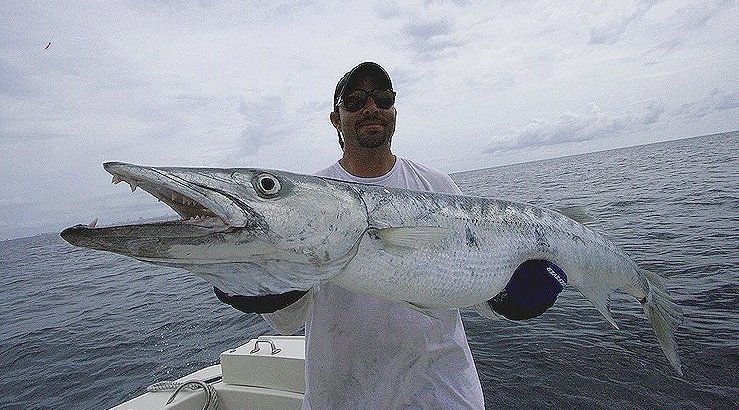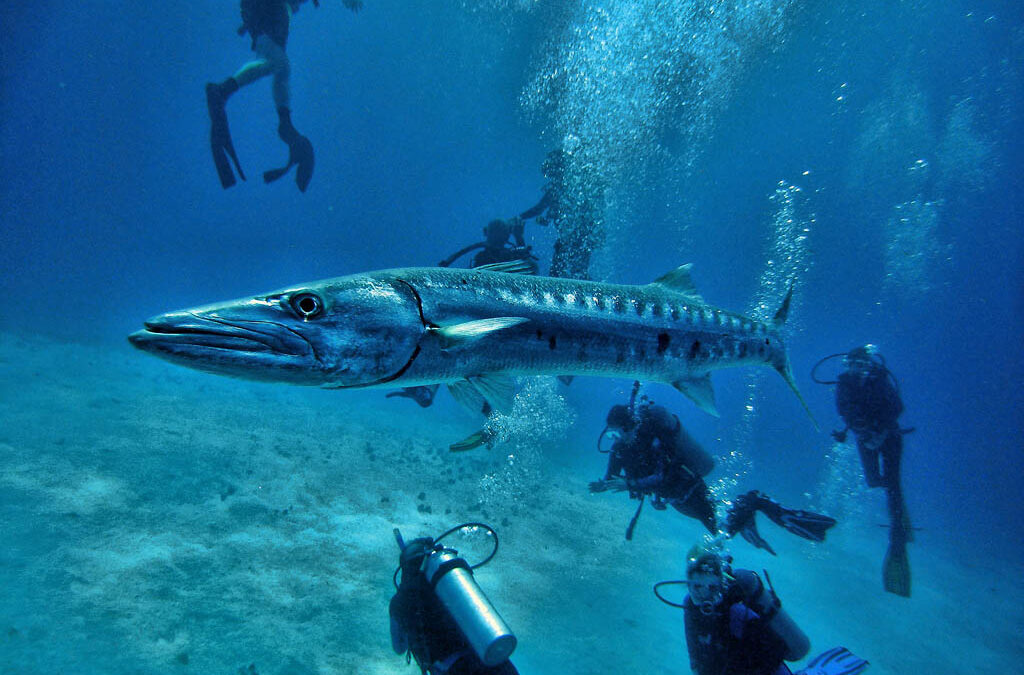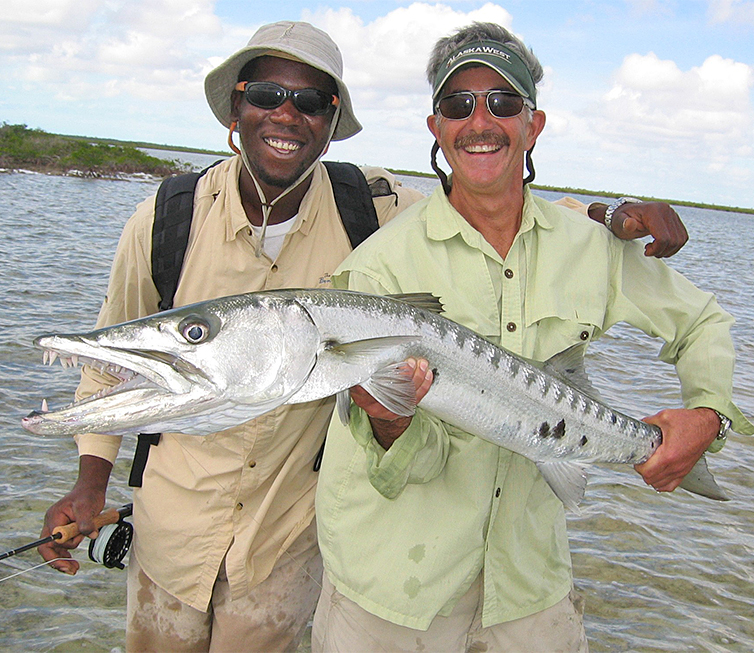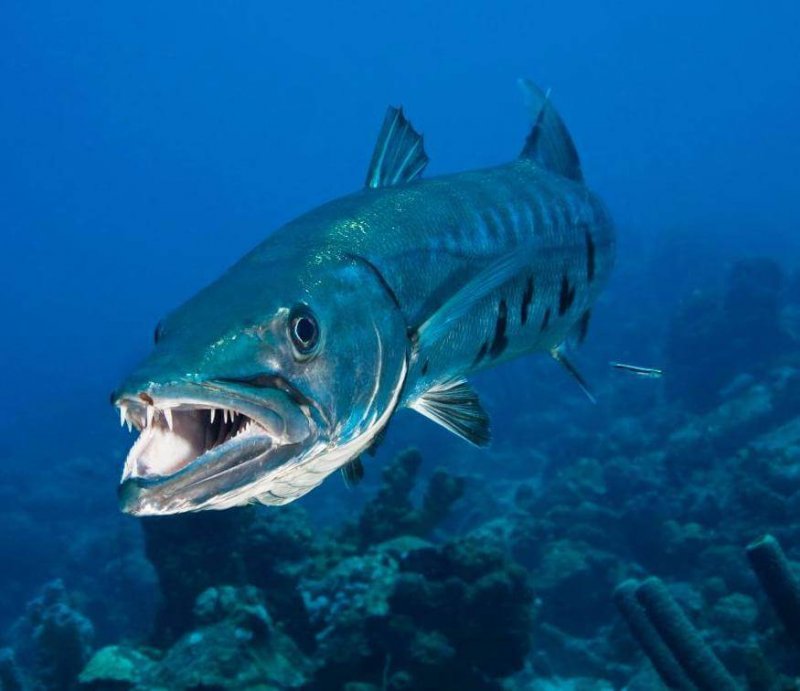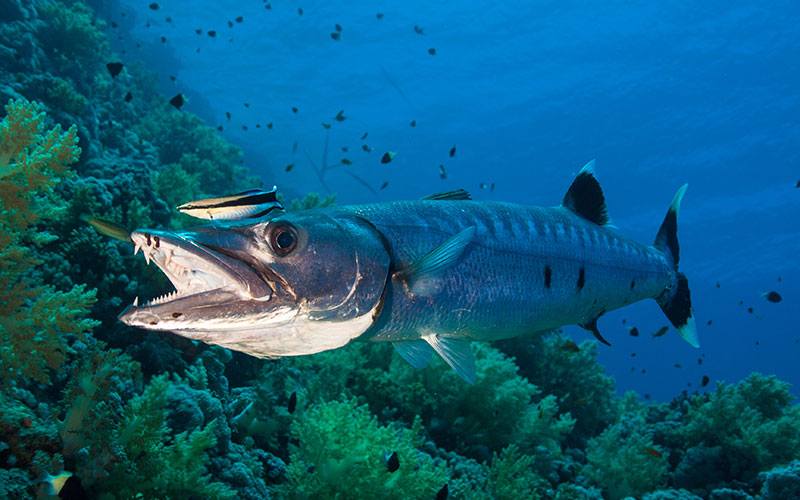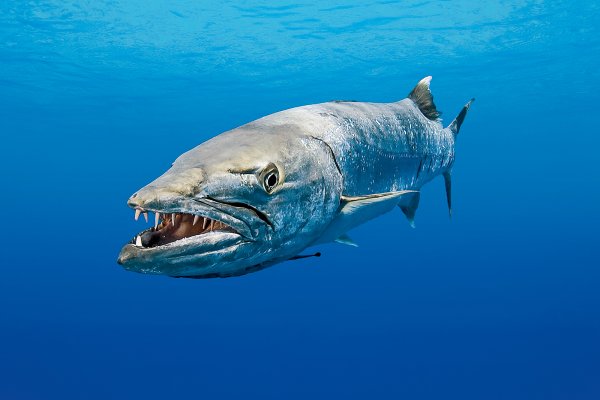The Barracuda is an amazing ambush predator. The typical body colouration of a barracuda is one of dark green, silver, or gray – often with light blue on the back. They also take advantage of their countershading camouflage to sneak up on unsuspecting victims. This is why they can easily ambush their prey. Barracudas are not inherently aggressive but can be dangerous to humans because their sharp teeth can cause serious lacerations, and they may mistakenly attack people if they see shiny objects as prey or mistake snorkelers for large predators. Rarely, a barracuda attacks a human. There are no reports of unprovoked attacks, there are only incidents involving spearfishing. In fact, they unnervingly approach scuba divers following them as if they were other predators. Attacks are rare and often a result of poor visibility or confusion, but can be prevented by avoiding flashy jewelry, not attaching fish catch near you, and being cautious around large barracudas, especially in muddy waters (BECAUSE THERE WAS THIS ONE STORY I READ IDK TRUE OR NOT BUT A WOMAN IN I THINK CONGO WORE SHINY BOTTLECAPS OR BOTTLES TO WARD OF EVIL SPIRITS, BUT ATTRACTED A BARRACUDA THAT WAS VERY BIG AND IT RAMMED TOWARDS HER FULL SPEED BITING AND RAMMING AT THE SAME TIME AND IT DIVIDED THE GIRL INTO 2 FROM THE WAIST PART WHERE THE BOTTLE CAPS OR BOTTLES WERE TIED). This long, tubular fish has a very pointed snout filled with two rows of teeth, and small fins set back towards its crescent caudal fin. It is a shiny blue-gray above, fading to silver and white below, usually with dark spots on its lower sides, and sometimes with faint darker bars on its upper side. This is a successful daytime ambush hunter that can burst in speeds up to 35 mph, and is a danger to humans because it will mistakenly attack shiny objects or fish caught on spears. It can grow to over 5 feet long and over 100 pounds.The world’s biggest barracuda ever caught was a 46.40 kg Guinean barracuda by Thomas Gibson in Angola in 2013, measuring approximately 2.03 meters (6 ft 8 in) long. While this is the official record holder, a much larger great barracuda was reported to be 2 meters (6.6 feet) long, although its weight is not consistently recorded. Only twenty eight species of barracuda are still in existence today. They all belong with the genus Sphyraena, which is the single surviving genera of the family Sphyraenidae. These fish have teeth like when they hold their prey the inward facing teeth keep the prey stuck and the other teeth are used to bite and chew. Having large eyes generally means they have excellent vision. In fact, barracudas rely on visual acuity to identify and ambush their victims – even in sunlit clear waters. Known for their long, torpedo-shaped bodies, razor-sharp teeth, and silvery-grey skin, these fish are locally called ‘Sheela’ in Malayalam, ‘Tonki’ in Konkani, ‘Jellow’ in Telugu, ‘Suruli kandai’ in Kannada, and ‘Seela/Ooli’ in Tamil. Being stereotypical opportunistic predators means these ray-finned saltwater hunters feed most on slow-moving fishes, even if they’re larger than themselves, such as:Anchovies, other barracuda Groupers Grunts Herrings Jacks Killifishes Snappers and even Tunas. These fish are savage ambush predators that attack when least expected like surprise attack. These are dangerous so you should not provoke them or wear anything shiny while scuba diving with them. Overall the Barracudas are Savage Creatures Of Mother Nature.

